#s. gigantea
Text
Daily Jellyfish #1 - Stygiomedusa gigantea <3

Stygiomedusa gigantea (Animalia; Cnidaria; Scyphozoa; Semaeostomeae; Ulmaridae) AKA the 'Giant Phantom Jellyfish'.

© 2007 MBARI
Lacks stinging tentacles, but does have four oral arms that are assumed to be able to grow up to 10m long. These arms trap and engulf their prey (i.e. plankton and small fish).
It's bell, which can grow up to 1m in length, is made of a flexible tissue that allows it to expand up to ~4-5 times it's size - presumably allowing it to envelop any prey brought up to it by it's oral arms, so that it might digest it via the canals located along the mouthparts.

© 2007 MBARI
Tends to be more dominant in areas with low productivity, like the open ocean, which are usually lesser desired by predator species because of the lack of nutrients required to support most living organisms.
Typically it lives in the Midnight Zone (AKA Bathypelagic: ~1000-4000m), but is presumed to reach greater depths, spanning from the surface to 6665m. It is also presumed to live worldwide, save the Arctic Ocean.
Fewer than 130 sightings have ever been recorded.
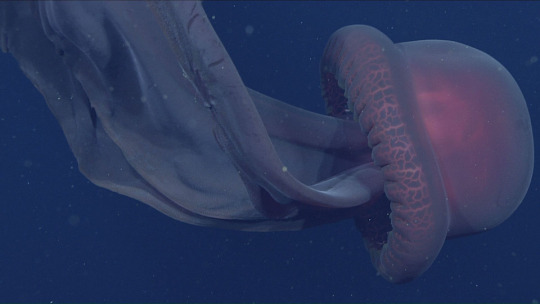
© 2018 MBARI
Collected S. gigantea samples suggest a reddish-orangish coloration, which, because visible light can only penetrate so far, allows them to appear almost invisible or faint depending on the depth of the water.
Appears to have a symbiotic relationship with the ophidiiform fish, Thalassobathia pelagica - the S. gigantea providing vital shelter with it's bell in the open ocean depths, and the T. pelagica reciprocating by removing and feeding on any parasites the jellyfish might harbour. The two are even suggested to be able to re-associate with one another when separated.

© 2003 MBARI

Masterlist! // My favourite jellyfish ever! It's my dream to be able to one day see one myself and contribute to it's sightings and research alongside a team <3

All images are from the official MBARI website.
#informative#infodump#marine science#marine biology#marine life#stygiomedua gigantea#s. gigantea#giant phantom jellyfish#phantom jellyfish#jellyfish#jellies#daily jellyfish#personal project
35 notes
·
View notes
Note
top 5 weird sea creatures?
5. phyllosoma! these guys are just larval stages of spiny lobsters but ive seen these irl and theyre So flat its fucked. marine larval stages as a whole get a shoutout, its rly interesting how lots of sea creatures body plans change so much that they fill completely different ecological niches throughout their lives

4. chaetognaths :) arrow worms :) [is so small that water is viscous to me and i have to shoot myself like a bow and arrow through the water to catch prey]
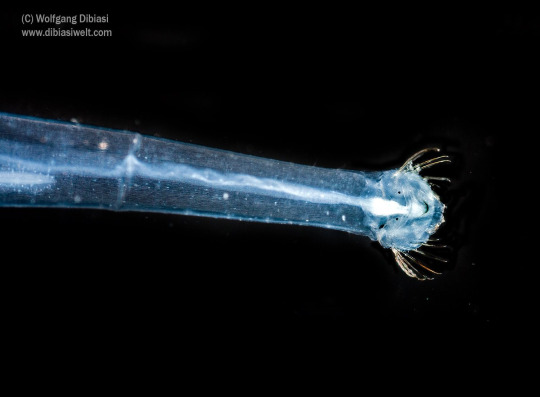
3. cliones! got to meet these guys in july and theyre so enchanting. eating you
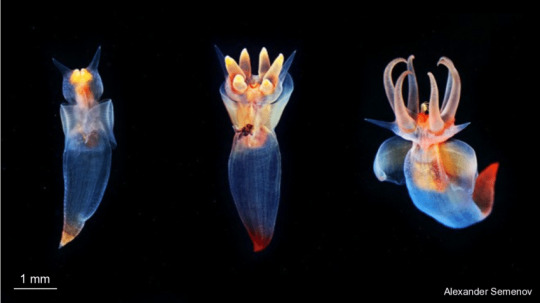
2. pyrosomes! i heart colonial tunicates
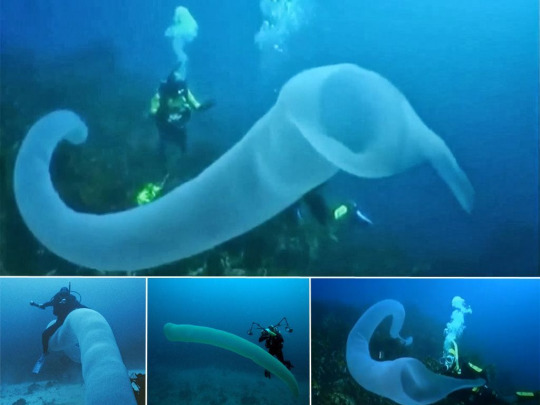
stygiomedusa gigantea my BELOVEDDDDDDDDDDD. seen here with her best friend of all time a cusk eel :)))
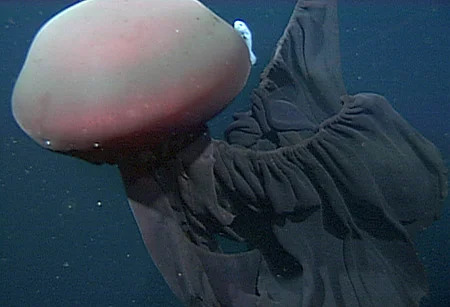
#marine biology#my asks#tyyyyyyyyyyyy!#i tried to pick more Obscure creachures altho im sure ppl have heard of 1&2 before if theyve followed me for long enough fhdsbfkds#it was hard thinking of just 5 since thinking of one makes me think of other related animals#im also sure there are 'weirder' ones that im not remembering rn#like obvs s. gigantea is not rly that 'weird' like there are plenty weirder jellyfish#but shes number one to me <333#lobsters#chaetognaths#sea slugs#pyrosomes#jellyfish
33 notes
·
View notes
Note
🍮
First off, I noticed the timestamp is like, 12 hours ago? it's 4 pm rn lmao, pls get some sleep 🥺🙏
SECOND!! I'd be honoured to find your jellyfish :)
I thought of this one pretty soon after I clicked the "answer" button- and it's the Giant Phantom Jelly- or the S. gigantea
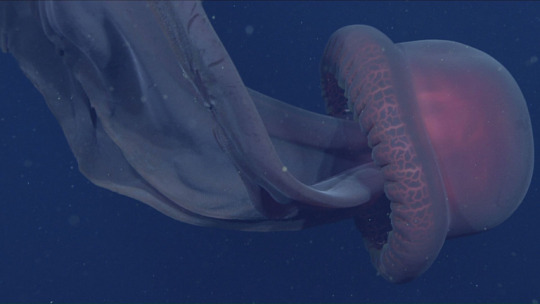
You might've heard of it- it's pretty well known for its absurd height (33' / 10 meters) and velvet-like appearance.
Your creations + art style give off a very elegant and larger than life feel, which I think is captured perfectly with the S. gigantea.
While they're brownish-orangish in colour- most lighting settings give them a deep purple look, which is a colour I definitely associate with you lmao.
The long, fluttering tentacles also remind me of your prose- which is somewhat elegant but rly refined teehee (at least when you talk about your ocs and stuff like that).
oh, to be a stygiomedusa gigantea swimming in the deep sea.........
12 notes
·
View notes
Text
Ok, so Black Maria gets to be a Giant Fuckoff Ancient Zoan (even if you take into account the spiderbod in preportion to her gigantic human form) just because Rosemygale grauvogeli is an ancestor to / early member of the same infraorder as turantulas, even though wikipedia says R. grauvogeli fossils (found so far) only got up to 0.24 inches

SO. MY ARGUMENT IS. Pierre SHOULD be allowed to be Pretty Big & an Ancient Zoan as is if I make his Bagu Bagu no Mi an Ancient Zoan model Cratoraricus oberlii (ancestor to / early member of Order Scolopendromorpha, the same family as S. gigantea and S. heros) even though the one fossil picture I can find with size reference shows it only being about 1.5 inches long.

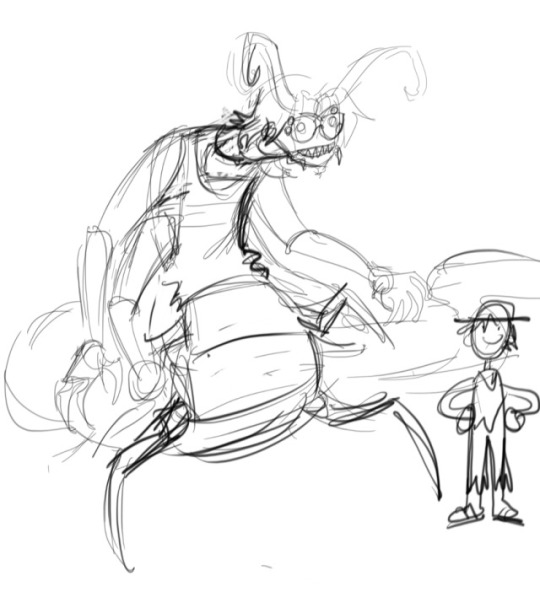

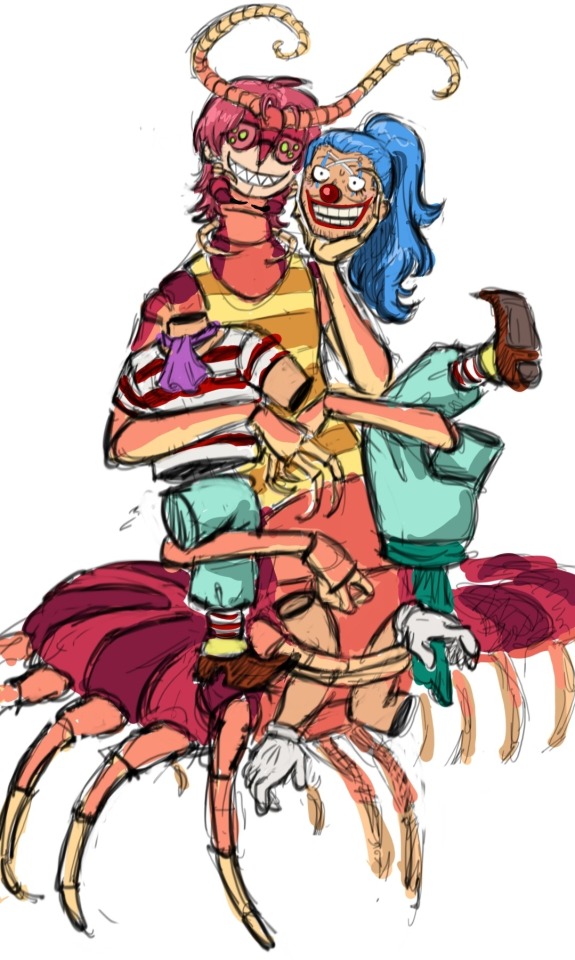

TBH maybe I should make Pierre's Zoan form even bigger, especially now that he's 7.5 ft tall in normal human form....Zoan forms seem to Make You Bigger to a degree that has little to do with the actual size of the model animal.
Anyways. What's Pierre gonna do with the extra power that Ancient Zoans get? Probably Fuckall!!! I find it hilarious to give Pierre extra powers because he's the last person who fucking wants them.
102 notes
·
View notes
Note
my mom recently read in a novel that some larger praying mantis species have been known to kill and eat hummingbirds. I know about bird-eating tarantulas, but I was curious if you knew of other insects who prey on birds, mammals, etc.? I know most will scavenge anything, but what abt critters who hunt? the idea of insects who hunt large prey is fascinating to me
large generalist predatory insects like mantises and katydids predominantly eat other insects, but the majority of the vertebrate prey they take is probably frogs and lizards, and typically ones smaller than themselves. hummingbirds might not be too representative of typical vertebrate prey because (I believe I heard a mantis researcher say) their metabolism is so tightly wound that the stress of being caught is enough to kill them, and all the mantis has to do is hang on, which they definitely can do. still, vertebrate predation is pretty impressive for orthopterans and mantodeans, since they’ve got to do it all without venom!
army ants of various types are also famous for their ability to catch vertebrates, but most army ants are actually specialists on other social insects (ants, wasps, termites), and the few generalist predator army ants still predominantly prey on invertebrates (and don’t skeletonize cows and horses like they do in cartoons).
diving beetles will hunt fish and aquatic amphibians—there’s a reason their larvae are called “water tigers!” belostomatid water bugs are probably the most impressive aquatic vertebrate-eaters though, and use powerful venom to subdue surprisingly large fish, tadpoles, and even other vertebrates:
outside of insects, there’s a lot of spiders that can feed on herptiles, either by overpowering them with strength like huntsmen and tarantulas, or by snaring them in webs like widows, the most successful snake eaters:
plus, there’s always the famous Nephila orbweavers whose sturdy webs can catch avian prey, but this is probably a fairly rare occurrence.
going over to centipedes, giant scolopendrids are quite successful predators of vertebrates, with any species large enough likely preying on herptiles, and occasionally on some far larger than they are!
Scolopendra venom is evolved to take down large prey, so it’s no surprise they’re some of the most prolific vertebrate-eaters in the arthropod world. some very large Scolopendra (gigantea, maybe galapagoensis, viridicornis, heros) will hunt bats, sometimes by hanging to catch them in flight. other predation on mammals and birds seems to occur opportunistically, especially where the prey is helpless: S. galapagoensis was recorded feeding on baby rodents in the Galapagos; other island species like Cormocephalus coynei will feed on seabird chicks (enough with the “fluffy” avian favoritism, Nature! ‘pedes gotta eat).
oh, speaking of nestling-devouring, there’s also some freaky observations of slugs munching on soft mushy songbird babies! someone on Twitter had their nest camera record some chicks getting eaten by a large Carabus ground beetle, but I can’t find it again.
but I think the most shocking example of vertebrate predation by an invertebrate is probably Epomis, another ground beetle. as larvae, they feed on frogs far larger than they are by letting themselves get attacked, latching onto the would-be predator, and munching on it until it perishes. adult beetles also prey on amphibians, but just run them down instead of luring prey.
youtube
(there’s also video of the adult beetles preying on frogs, but they seem to all be stolen by some weird content scraper YT channels, so I’ll not post them here.)
let me know if I missed any good examples of vertebrate predation by bugs!
308 notes
·
View notes
Text
I loooove jellyfish so much, especially my favorite: the Phantom Jellyfish ( sygiomedusa gigantea )
Kingdom: Animalia Order: Semaeostomeae
Phylum: Cnidaria Family: Ulmaridae
Class: Scyphozoa
fun facts because I wanna info dump :3
The diameter of the bell can grow up to be 1 meter and their arms¹ can grow up to a length of 10 meters.
They have no stinging tentacles!
The s. gigantea is the only species of deep sea jellyfish that is monotypic².
Only around 110 sightings of them have been seen for the past 110 years despite being believed to live widespread around the world.
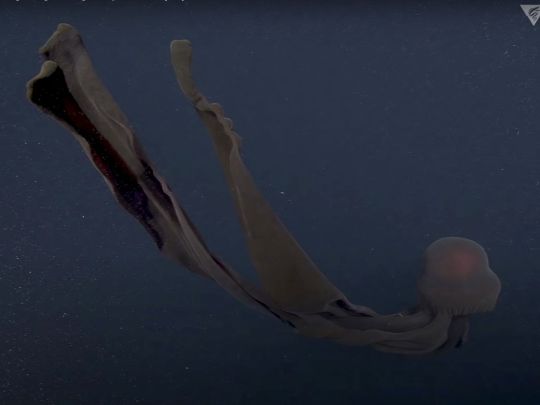
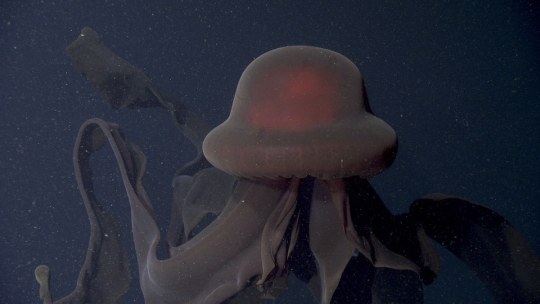
¹ Instead of stinging tentacles like usual jellyfish, the s. gigantea have arms to capture and trap prey. ( Plankton, small fish. )
² Monotypic in this context means that the species ( in this case, s. gigantea ) does not have any subspecies.
Let me know if I got anything wrong! Or add on anything if you'd like. If you hyperfixate on jellyfish, please tell me about your favorites!
ヾ(≧▽≦*)o

#jellyfish#phantom jellyfish#sygiomedusa gigantea#jellyfish facts#hyperfixation#info dump#biology#zoology
147 notes
·
View notes
Note
10, 19, and 30!
"10. Tell me what aquatic animal(s) you think is severely underrated."
EASY. The Stgiomedua Gigantea, aka Phantom Jellyfish! They're so elusive, that theyve only been seen a staggeringly finite amount of times, but are believed to inhabit all the oceans except the Arctic! They are quite beautiful, and are my favorite species of giant jellyfish. It has a wikipedia page if you want to know more.

"19. Have you ever been to the ocean?"
I've swam in the ocean several times at the beaches in Florida when I used to live there, and it was fun everytime. My dad almost got pinched by a crab once LOL
"30. Stupidest aquatic animal name?"
Do seabirds count? Biggest example I got is one of the African Penguin's vernacular names; THE JACKASS PENGUIN.
#honorable mentions for several other sea creatures that feel niche to me are the vampire squid and several comb jelly/ctenophora species.#there's just too many to list you see#another honorable mention for silly aquatic animal names that I find funny is the tasselled wobbegong. wobbegong is fun to say.#though I bet its name comes from a non-english word. i haven't checked.#funnily enough I am not actually all that crazy over jellies-- it's cephalopods that get my full attention. i lov squids.#askbox meme
5 notes
·
View notes
Text
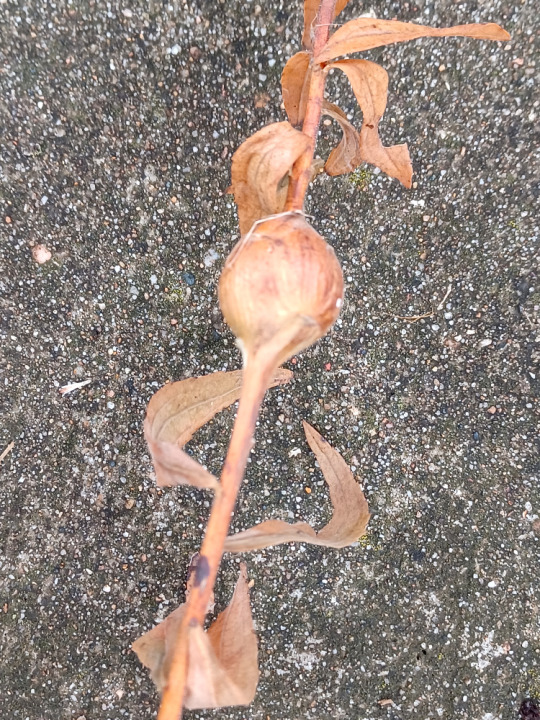
I volunteered with the Ozark Rivers Audubon Chapter doing some invasive species removal at the Nature Center today. One of the other volunteers found something really cool--this gall! It's on a Solidago species, possibly S. gigantea. And while I've primarily seen galls on oaks (Quercus) made by various gall wasps (Cynipidae), this one is actually made by the goldenrod gall fly (Eurosta solidaginis), a native species. So today I learned something new!
Plant galls are an immune response to attacks by pathogens and predators ranging from viruses and fungi to insect larvae. In the case of gall wasps and gall flies, the larvae induce gall growth; it's thought that they exude a chemical that triggers the galls, though the physical damage from chewing may also play a part. Because the larvae are active when plants are exhibiting a lot of growth, the galls can expand quite quickly. The larvae then live inside the gall until they're ready to molt into their adult form.
#nature#insects#wasps#flies#goldenrod#plants#arthropods#invertebrates#native species#native plants#native animals#botany#biology#ecology#parasitism#parasites
54 notes
·
View notes
Text
Yes, I would have plants that make "carrion flowers"....
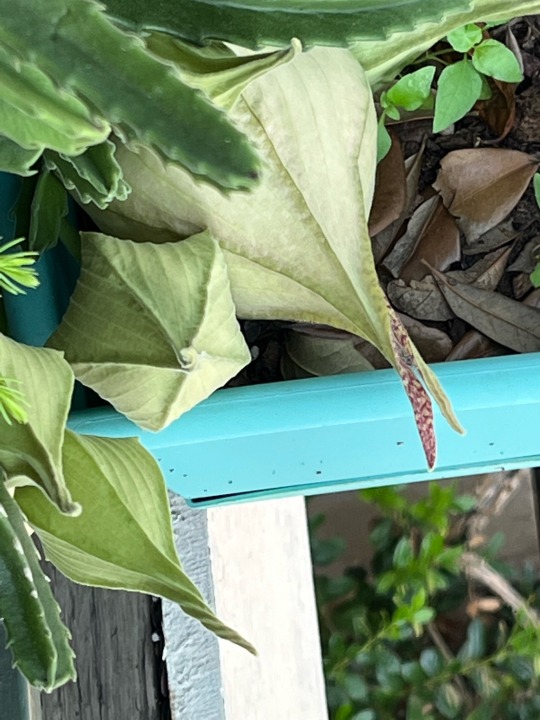
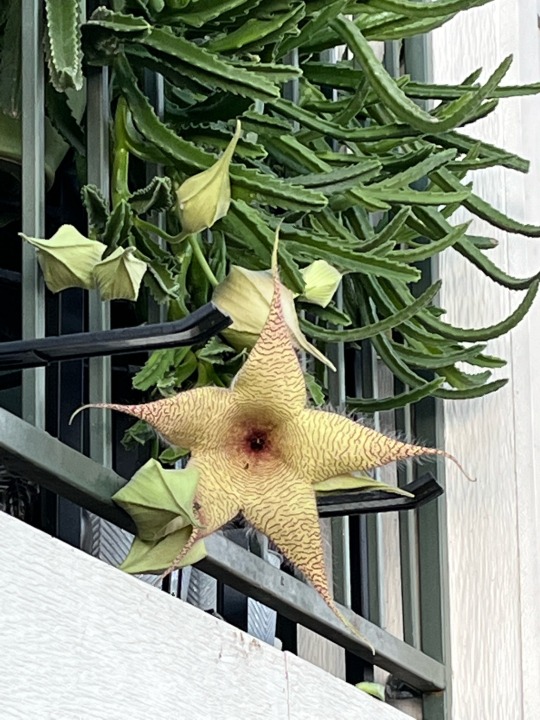
They smell slightly of rotting meat, and the hairs also help mimic the bodies of small carcasses. So, they attract flies to pollinate them!
And yes, the Demogorgon's head was designed to look like their flowers.



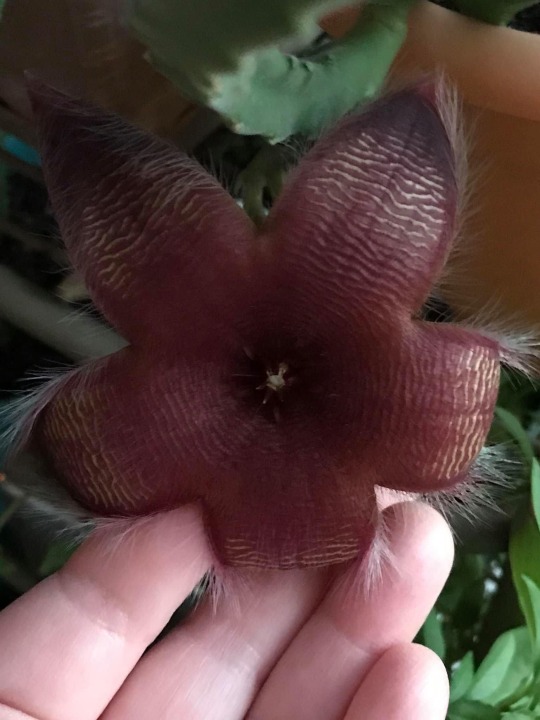
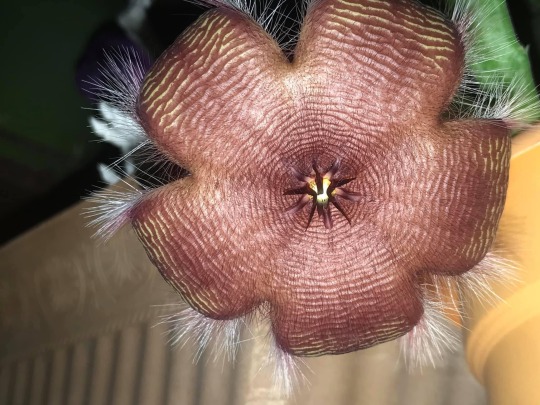

All of these pics are of my own plants. The darker, smaller ones, I named "Seymour". They could be Stapelia grandiflora, S. hirsuta, and/or S. asteria. All of those are kind of pink to burgundy with yellow striations... and all very hairy. The big one at the beginning is S. gigantea, and it definitely smells enough to immediately attract flies. I have (at least temporarily) named it "Gorgy".
This one I call "Audrey".


Seymour and Audrey flowers don't smell like much of anything to me.
But I freaking love them all!
#me in real life#me irl#my stuff#my plants#plants#gardening#stapelia#carrion flower#off topic#will delete this later#will save to off topic#sep 24 2022#stranger things#demogorgon
72 notes
·
View notes
Text
Marimite: a summary
Rosa Chinesis family: Surely nothing bad will come of bottling my feelings. :)
Rosa Gigantea family: I'm not like any of the other girls here. homg she just like me fr :o
Rosa Foetida family: S P I Troll E
#maria-sama ga miteru#maria sama ga miteru#marimite#maria is watching over us#category: anime#youko in the distance wondering what is @$%ing wrong with her lineage
17 notes
·
View notes
Text
#2015 - Scolopendra laeta - Striped Centipede

Photo by Patrick Wake.
Also known as the royal blue centipede or purple centipede depending which colour form you've got. Quite popular in capivity for that reason. A small Scolopendrid (<8cm) first described in 1887 by German entomologist Erich Haase, found over most of the mainland.
There are roughly 100 known species of Scolopendra, most of them tropical. At least three species are amphibious. They are well known for their potent venom, which can sending burning pain all the way up a limb and last for weeks. At least one human fatality is known from S. gigantea (30cm long) but the venom is usually applied to other invertebrates, frogs, tarantulas, lizards, birds, snakes, rodents, and even bats. The Scolopendra that catches bats does so by dangling into the opening of caves and snatching the bats as they fly past.
#scolopendra#australian centipede#centipede#scolopendridae#cooleenup island#come to australia you might accidentally get killed
2 notes
·
View notes
Text
Giant phantom jellyfish 990m (3,200 ft) beneath the surface in Monterey Bay @mbari-blog (Stygiomedusa gigantea) - Footage by MBARI
●▬▬▬▬▬▬▬▬▬▬▬▬▬๑۩۞۩๑.▬▬▬▬▬▬▬▬▬▬▬▬▬●
Commonly known as the giant phantom jelly, this jellyfish is a part of the monotypic genus of deep sea jellyfish, Stygiomedusa. This is in the Ulmaridae family. With only around 110 sightings in 110 years, it is a jellyfish that is rarely seen, but believed to be widespread throughout the world, with the exception of the Arctic Ocean.
The Monterey Bay Aquarium Research Institute's remotely operated underwater vehicles have only sighted the jelly 27 times in 27 years. A study conducted by the Journal of the Marine Biological Association of the United Kingdom, focusing on four Stygiomedusa gigantea present in the Gulf of Mexico, revealed information regarding the wider distribution of this species. S. gigantea is thought to be one of the largest invertebrate predators in the ecosystem. It is commonly found in the ocean's midnight zone, reaching depths as deep as 6,665 metres (21,867 ft).
#jellyfish#sea creature#sea life#sea animal#sea animals#marine bilogy#marine life#marine biology#fish#sea creatures#sea aesthetic#sea#deep sea aesthetic#deep sea creatures#underwater
13 notes
·
View notes
Text
Daily Jellyfish Masterlist (A-Z):

A:
B:
✰ Bathykorus bouilloni (Day #2)
C:
D:
E:
F:
G:
H:
I:
J:
K:
L:
M:
N:
✰ Nemopilema Nomurai (Day #3)
O:
P:
Q:
R:
S:
✰ Stygiomedusa gigantea (Day #1)
T:
U:
V:
W:
X:
Y:
Z:

5 notes
·
View notes
Text
Unique Flowers
The earth laughs in flowers.
― Ralph Waldo Emerson
A Beehive (or Honeycomb) Ginger (Zingiber spectabile)
African Daisy (Osteospermum Soprano® Lilac Spoon)
Bat Face Cuphea (Cuphea Llavea)
Brazilian Dutchman`s Pipe (Aristolochia gigantea)
Calceolaria Species (Calceolaria corymbosa)
Blue Poppy (Meconopsis betonicifolia)
Bird of Paradise (Strelitzia reginae)
Common…
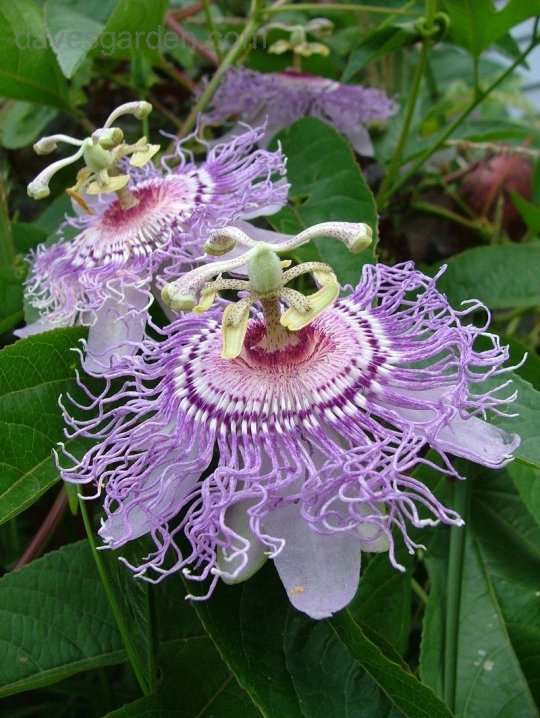
View On WordPress
2 notes
·
View notes
Photo
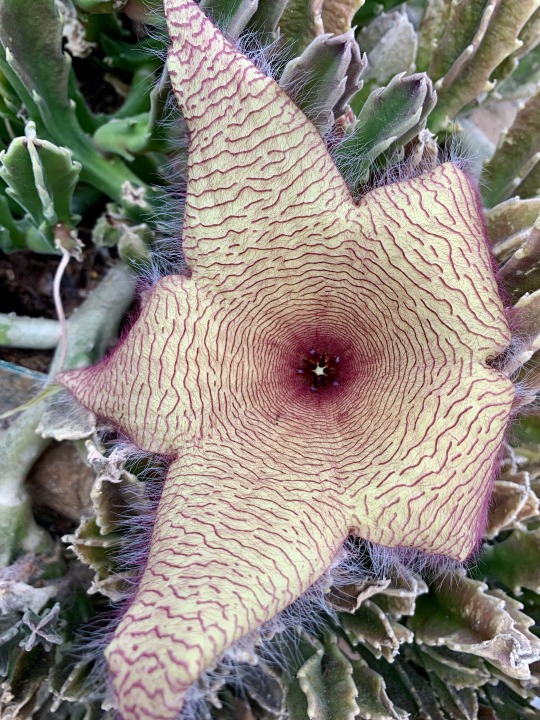
Carrion Flower | Stapelia Gigantea ( Tanzania to S. Africa )
US National Botanical Garden, Washington DC
0 notes
Text
Wednesday 31 July 1839
7 20/..
11 25/..
fair but dull – F67 ½° at 8 am – breakfast at 8 40/.. to 9 ¼ - waited for carriage – out at 9 55/.. to the castle – sent back our new guide at 10 8/.. who brought the carriage at 10 ½ - fine view from the castle of town and fiord – took the carriage up the hill the road we came to see the view –
4sk. paid the woman at the house where we alighted on coming away at 11 ½ - at the Palace at 12 10/.. – Hexastyle portico, and hall opening on to the top of it 20x115 yards – handsome room at the back of the staircase – columned – a Saxon at work at the Scagliuola [Scagliola] pilasters – ceilings boards and 2 layers (crossing each other) of reeds put on with wire – floor-boards 1 ½ in. thick battens – came away at 1 20/.. – at the Botanic garden at 1 40/.. – called at [Vonkowskys] – plenty of guides – then to Hoppe’s for pencils English for A- and sent off the carriage at 2 50/.. from Hoppes’ door and walked home for 2 pencils English 40sk.
July 30 – Botanic garden well arranged and very pretty ground –
Veratrum nigrum
Epilobium angustifolium (contamine)
numerous [genus] study it –
Rumex acetosum [acetosa] sorrel – study this genus.
Saxifraga longifolia (the tall S. of the Pyrenees?)
S. geum. London pride.
S. crassifolia
S. crassifolia cordata
the pink thing in the walk (Johns’ garden) at Shibden
Dianthus latifolius (Sweet William)
Linaria stricta and vulgaris (common yellow snapdeagon)
Lotus. the yellow butterfly flower on the little field brow at home that grows with the potentilla
Solidago gigantea, Golden rod.
vaccinium myrtillus, bilberry?
v. uliginosum (cloudberry?)
came in at 3 ¼ and sent off John Johnston our new guide to get his dinner till till 4 ¼ - A- had some of our Deventer gingerbread – excellent – warmed her stomach – left her lying on the sofa and went to Vonkowskys’ at 3 ¾ - no! rain and went at 4 ¼ - Mr. Jäger much recommended Mr. Smith – satisfied with S- at 2 ½ species a day – brought him home with me – paid the bill 2.8.0 including the 8sk. for the coachman carriage charged 5 hours – at 5 5/.. A- and Mr. Smith and I went to the coachmaker to see about the carriage – home at 5 ¾ - saw Johns’ foot – very bad – dinner at 6 ¼ - Had Messrs. Smith and Jäger from 8 to 9 and the medecin [médecin] Kallevig to see John’s foot –
SH:7/ML/TR/12/0014
John’s foot a thing of old standing – A- and I had coffee at 10 – fine day but heavy shower at 3 ¾ for 20 minutes
1 note
·
View note